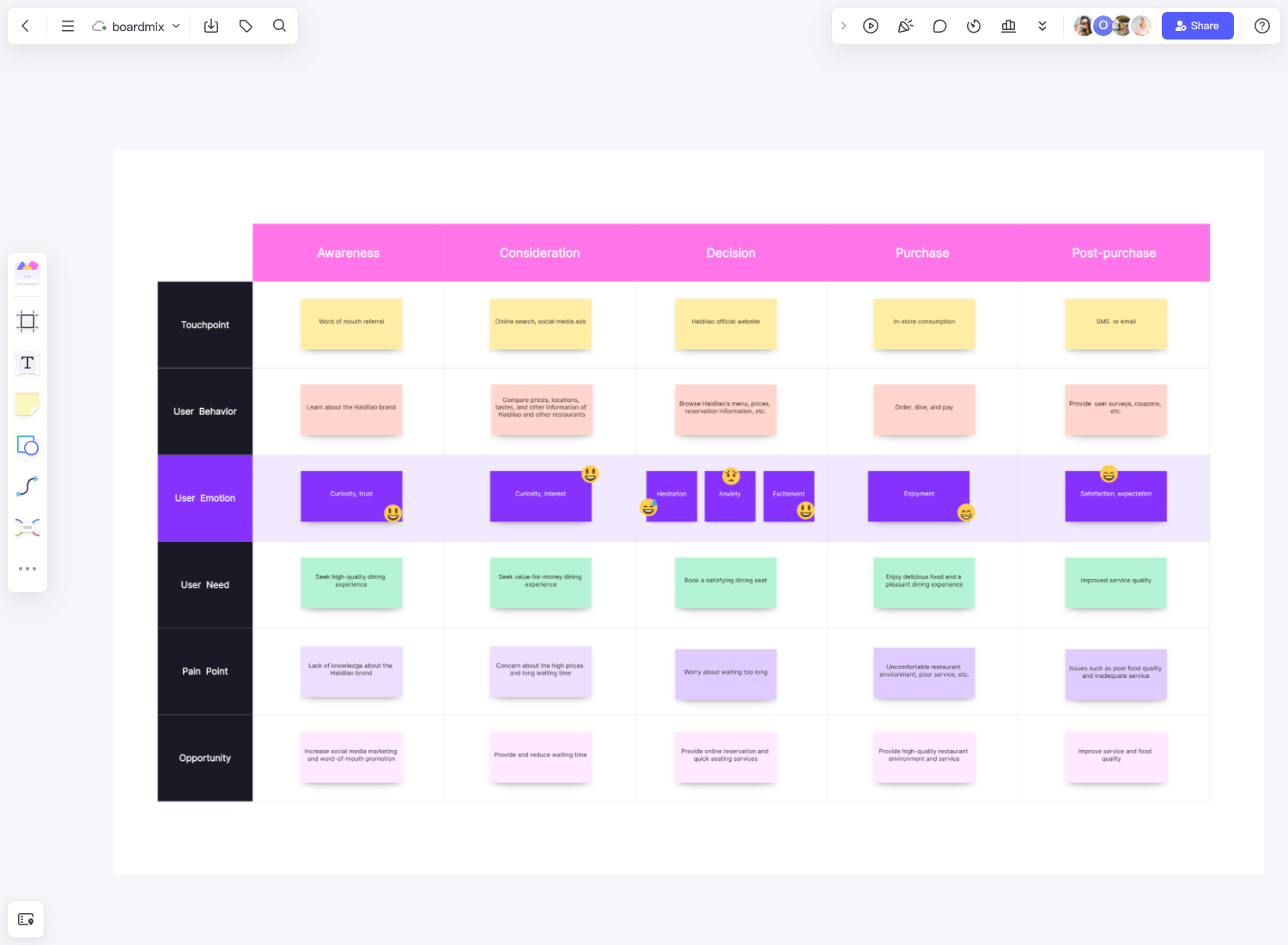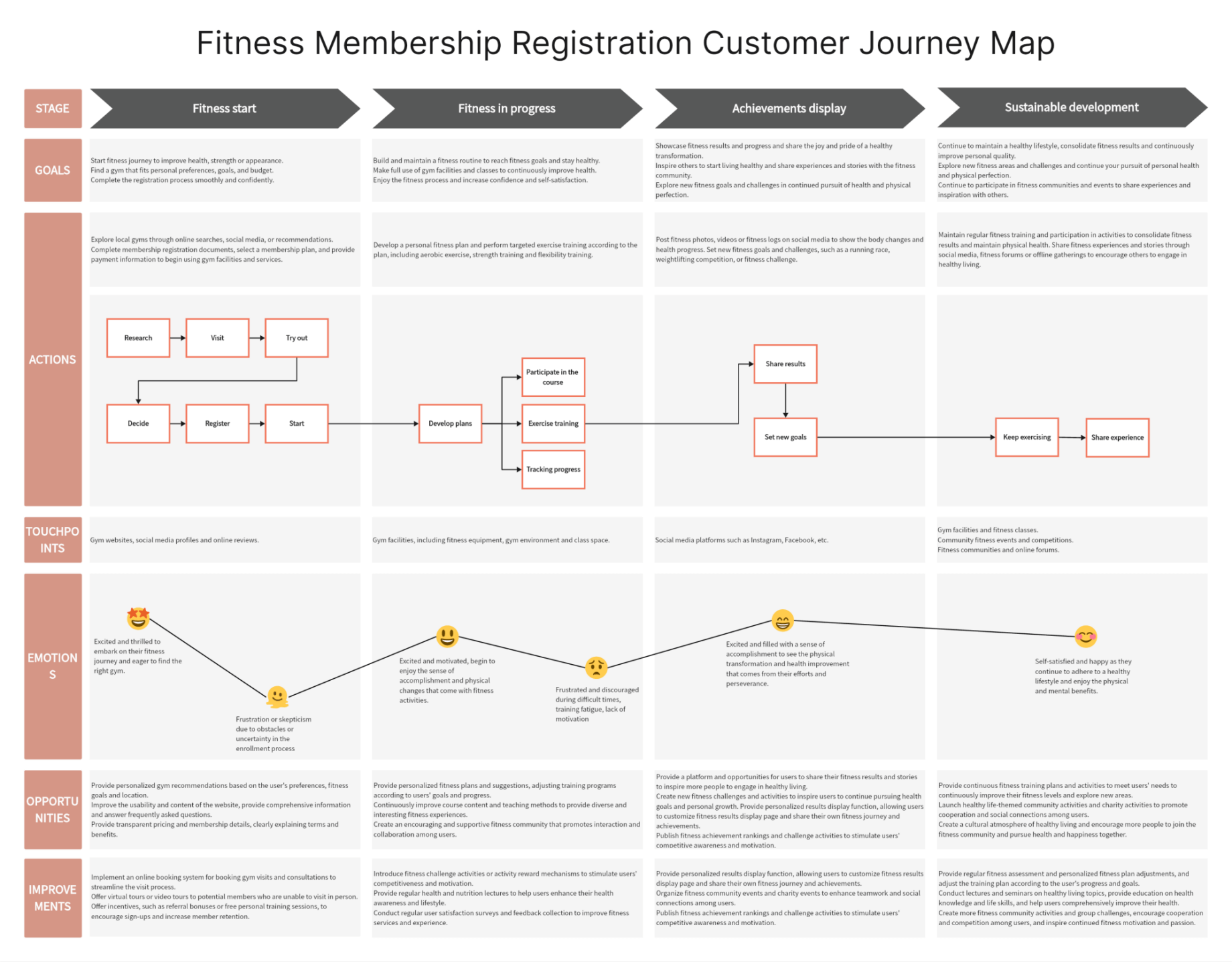The customer journey map is a strategic tool used by businesses to visualize and understand the experiences of their customers as they interact with a product or service. Using a customer journey map template allows companies to understand their customers better. As you know the patterns of your customers, you can better address their expectations. Customer journey mapping is essential to all businesses, regardless of age and size. After all, every company aims to provide better products and services for its target market.
About the Customer Journey Map
What is a Customer Journey Map
Gone are the days when the only channel you have to track your customer's point of view is through reviews. While these are useful, some companies rely on other processes to assess customer behaviors. They use a customer journey map. It is a diagram depicting customers' phases as they interact with a specific company. This can include purchasing products online, contacting customer service on the phone, and giving reviews on social networking sites.
Purpose of Writing a Customer Journey Map
With customer journey mapping, your business can visualize the target customer experience as they interact with your brand and products. It is a data-driven approach that allows you to look at how your target market experiences the brand against how your company thinks they do. Since you focus your approach on customer behaviors, they will feel more valued than just treating them as part of the numbers.
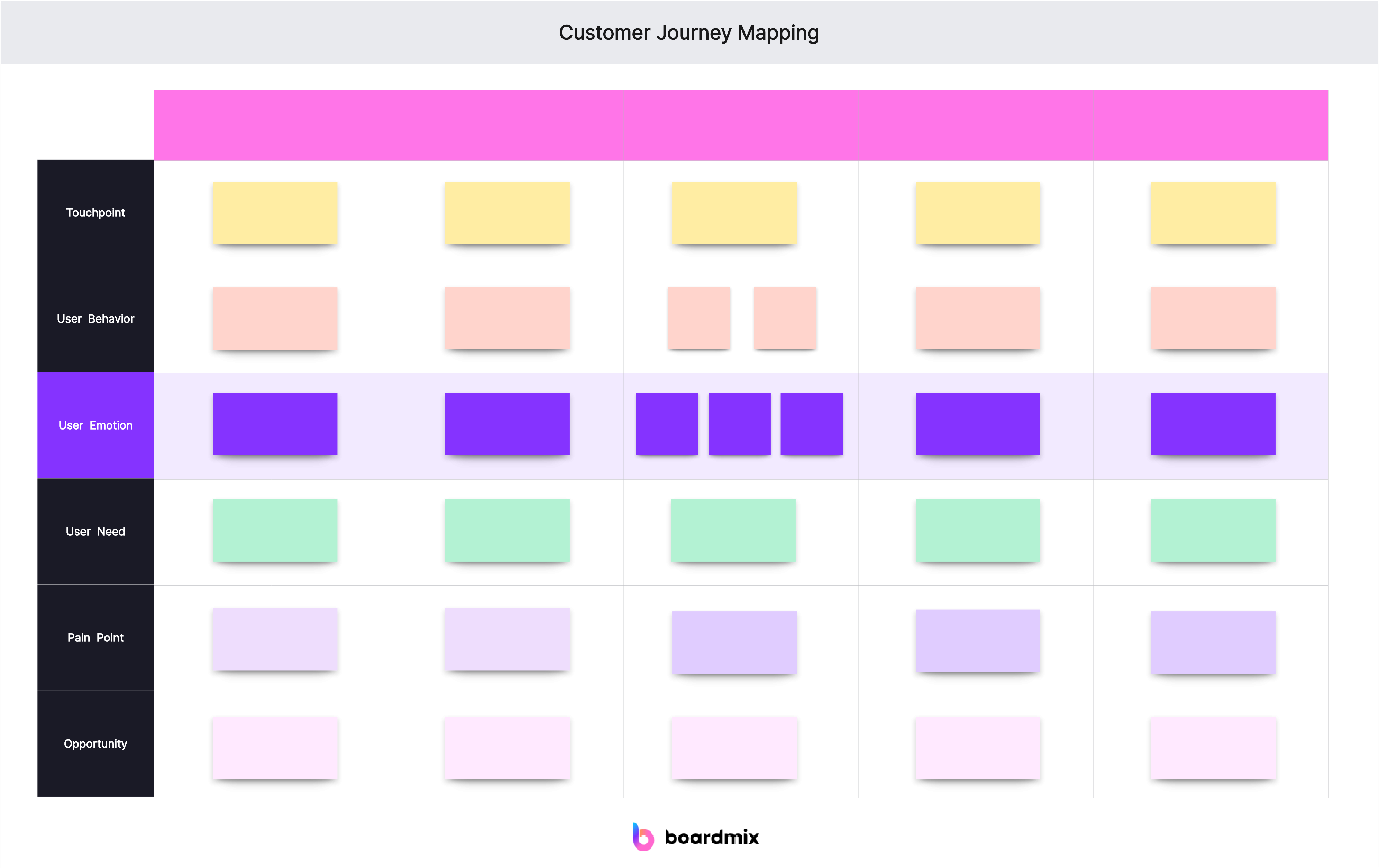
Key Elements of Customer Journey Map
Customer Persona
A company must know who its customer is. The customer persona refers to the composite representation of a market segment. This is where customer experience teams can predict customer feelings and behaviors. You can create a customer persona but ensure they are brief. It pays to include only the essential points.
Touchpoints
Customers' interaction with your brand throughout the buying process is a touchpoint. The touchpoints of a customer's journey will depend on the marketing approach, product, sales, and customer service. Touchpoints can include social media channels, websites, TV ads, or brand experiences like Amazon reviews and social media comments.
Customer Emotions
This is where companies find the customer journey map template very helpful, as it tracks how a customer feels during the experience. As the company recognizes the customer's emotional journey, it can identify potential pain points and successes, creating a clearer vision of where you will focus your energy and how to achieve it.
Actions and Behaviors
Generally, customer actions and behaviors refer to what they do or ought to do at every touchpoint. This can include clicking on a link in an email to track packages or searching for service and product reviews.
8 Customer Journey Map Templates & Examples
The customer journey map outlines the various touchpoints and emotions that a customer encounters throughout their relationship with a brand. Here are 8 different customer journey map examples, illustrating the diverse ways in which this tool can be applied across various industries.
1. Online Shopping Customer Journey Map
The online shopping journey map focuses on the process from the initial awareness of a product to the final purchase and post-purchase experience. It includes stages such as product search, comparison, selection, checkout, delivery, and customer support. Understanding this journey helps e-commerce platforms to streamline their shopping experience and address potential pain points.

2. Travel Booking Platform Customer Journey Map
For travel booking platforms, the journey map encompasses the entire process from dreaming about a trip to returning home. This includes researching destinations, booking flights and accommodations, experiencing the trip, and post-travel activities like reviewing the experience. A well-designed journey map can highlight areas for improvement in the booking process and enhance the overall customer satisfaction.

3. Fitness App Customer Journey Map
Fitness apps have a unique customer journey that begins with the user's motivation to improve their health. The map would detail the process of discovering the app, signing up, setting fitness goals, tracking progress, and receiving motivational feedback. Identifying and addressing any barriers in this journey can lead to higher user engagement and retention.

4. Dining Experience Customer Journey Map
The dining experience journey map outlines the customer's path from deciding to dine out to the post-dining feedback. It includes stages such as choosing a restaurant, making a reservation, dining, and paying the bill. By mapping out this journey, restaurants can identify areas to enhance the dining atmosphere, service, and overall customer satisfaction.

5. Online Store Customer Journey Map
Similar to the online shopping journey map, the online store journey focuses on the customer's path from browsing to purchasing. However, it may also include aspects specific to the store's brand, such as brand discovery, loyalty programs, and personalized recommendations. This map can help online stores to optimize their user interface and marketing strategies.
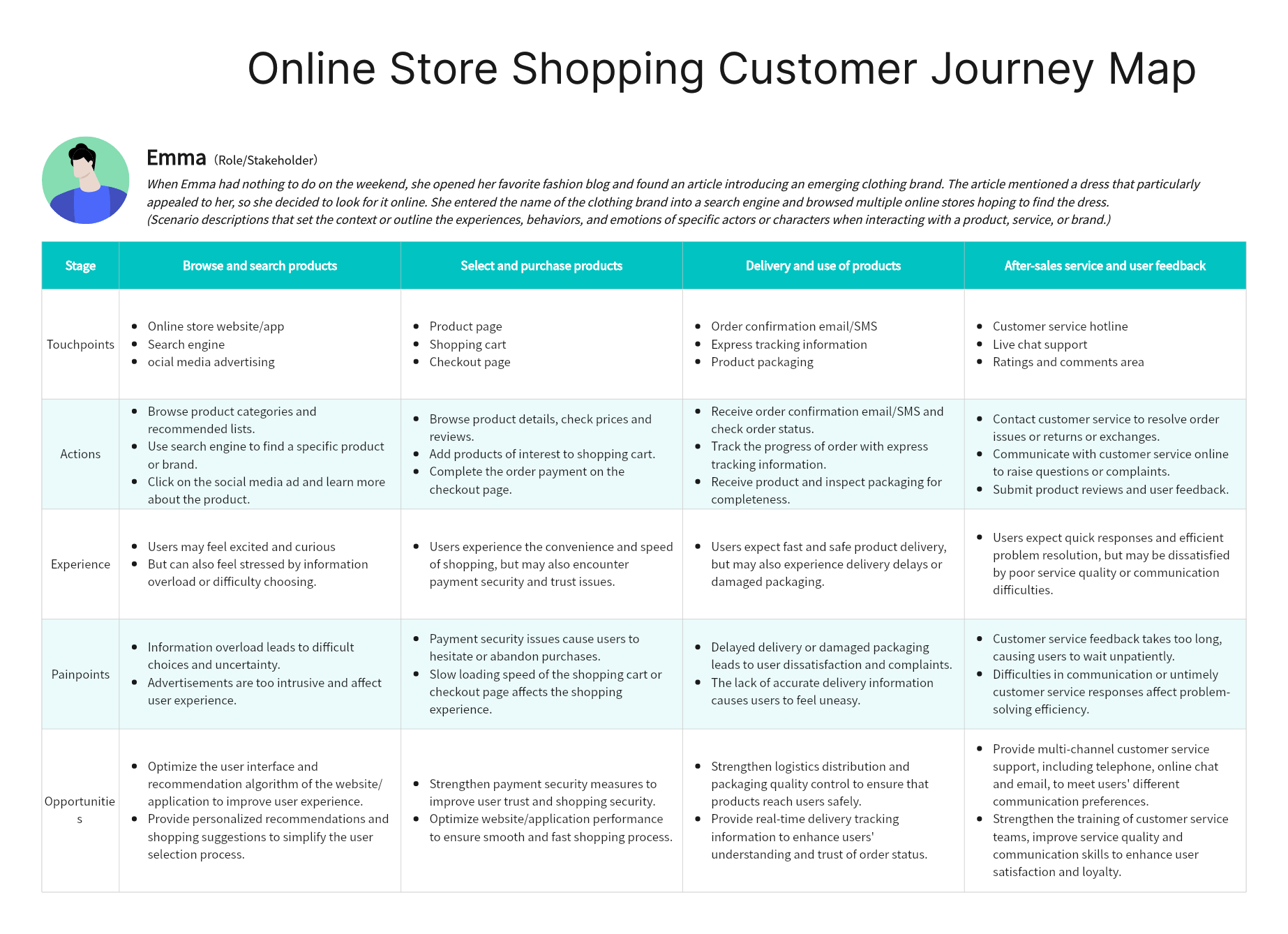
6. Home Improvement Planning App Customer Journey Map
A home improvement planning app's journey map would detail the customer's experience from identifying a home improvement need to planning, executing, and finalizing the project. This includes stages like project ideation, budgeting, contractor selection, and post-completion reviews. Understanding this journey can help the app to offer more targeted services and resources to its users.
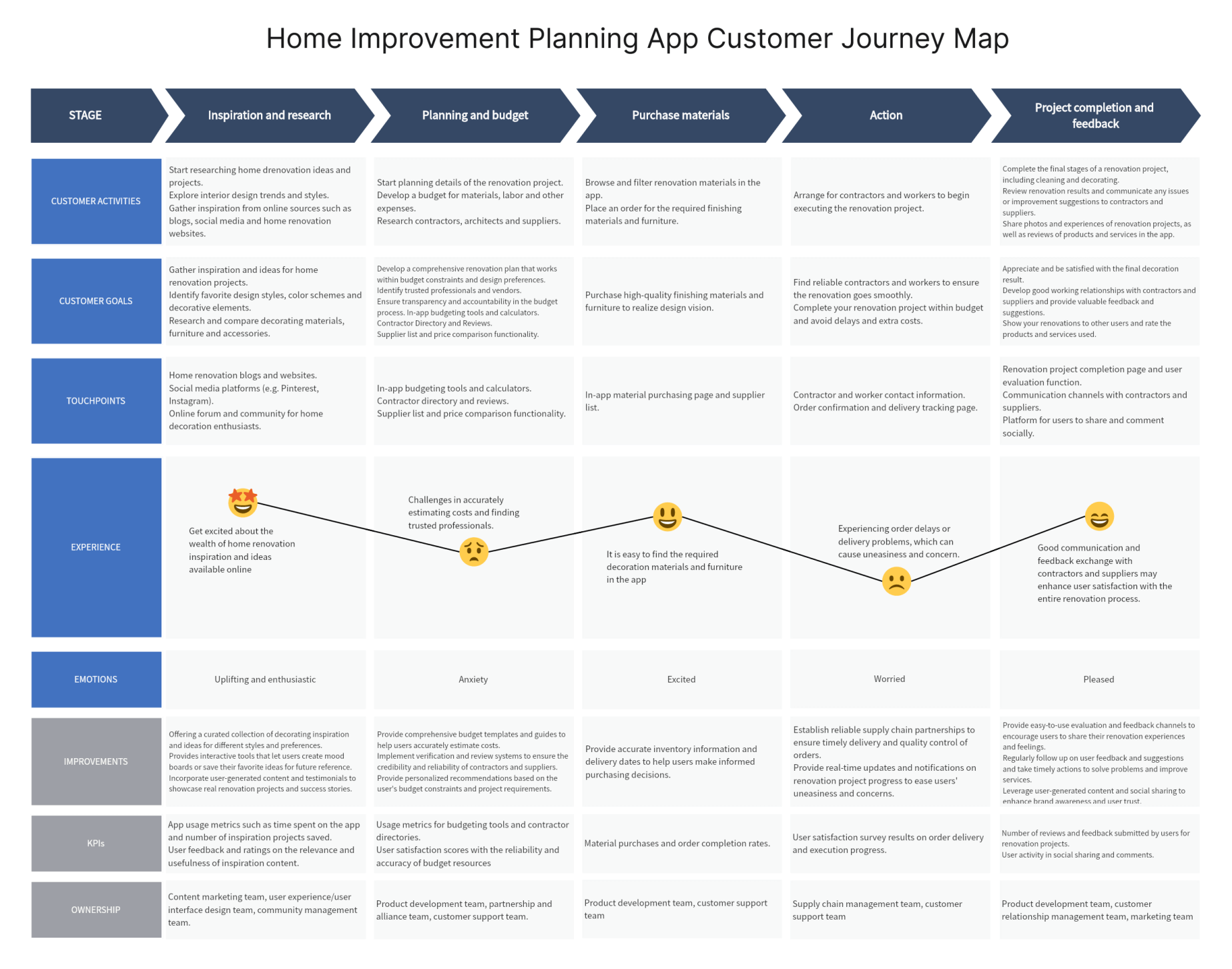
7. Fitness Membership Registration Customer Journey Map
For fitness centers, the journey map begins with the customer's decision to join a gym and ends with their ongoing membership experience. It includes steps like researching gyms, signing up for a membership, attending classes, and utilizing gym facilities. A well-crafted journey map can help fitness centers improve their member acquisition and retention strategies.
8. Online Learning Platform Customer Journey Map
The online learning platform journey map focuses on the student's experience from discovering a course to completing it and potentially pursuing further education. It includes stages such as course selection, registration, learning, assessment, and feedback. By mapping out this journey, online learning platforms can enhance their educational content, user interface, and support services.
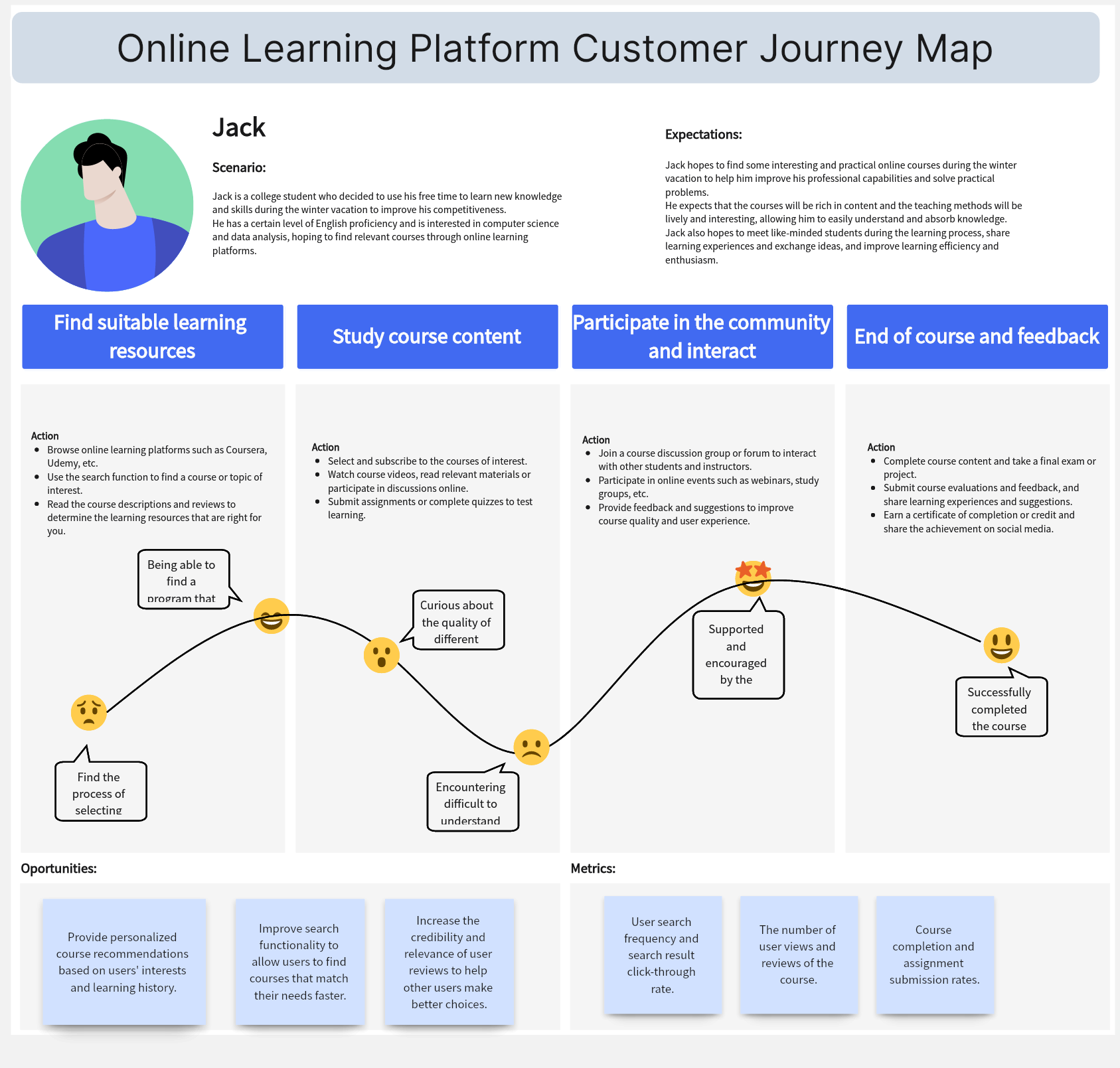
Customer journey maps are invaluable for businesses looking to understand and improve the experiences of their customers. By examining these eight examples, it becomes clear that regardless of the industry, a well-designed journey map can lead to more satisfied customers and a more successful business.
Creating a Customer Journey Map on Boardmix
A Step-by-Step Guide to Using Customer Journey Map Template
Customer journey mapping is a valuable tool for understanding your customers' experiences and interactions with your brand. Here's how you can create a customer journey map on Boardmix using a template.
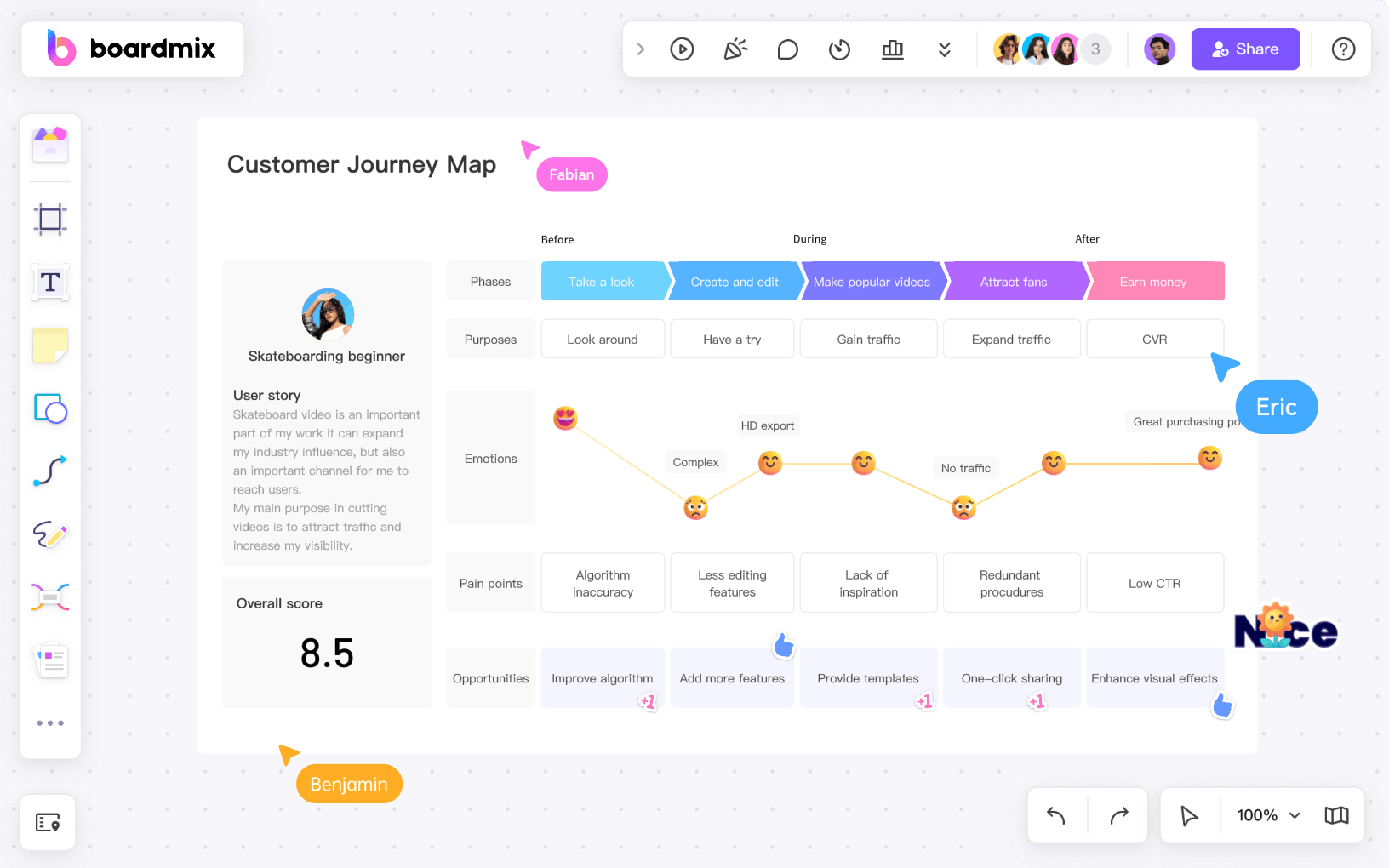
1. Choose the Right Template
Log in to your Boardmix account and navigate to the templates section. Search for "customer journey map" and select the template that best suits your needs.

2. Customize the Template
Once you have your chosen template on your board, start by customizing it. Boardmix allows you to change text, colors, and shapes within the template, ensuring it aligns with your branding and specific customer journey needs.

3. Define Customer Persona
Begin by defining the customer persona at the start of your journey map. This includes the demographic and psychographic details of your typical customer. You can input this information directly onto your Boardmix board.
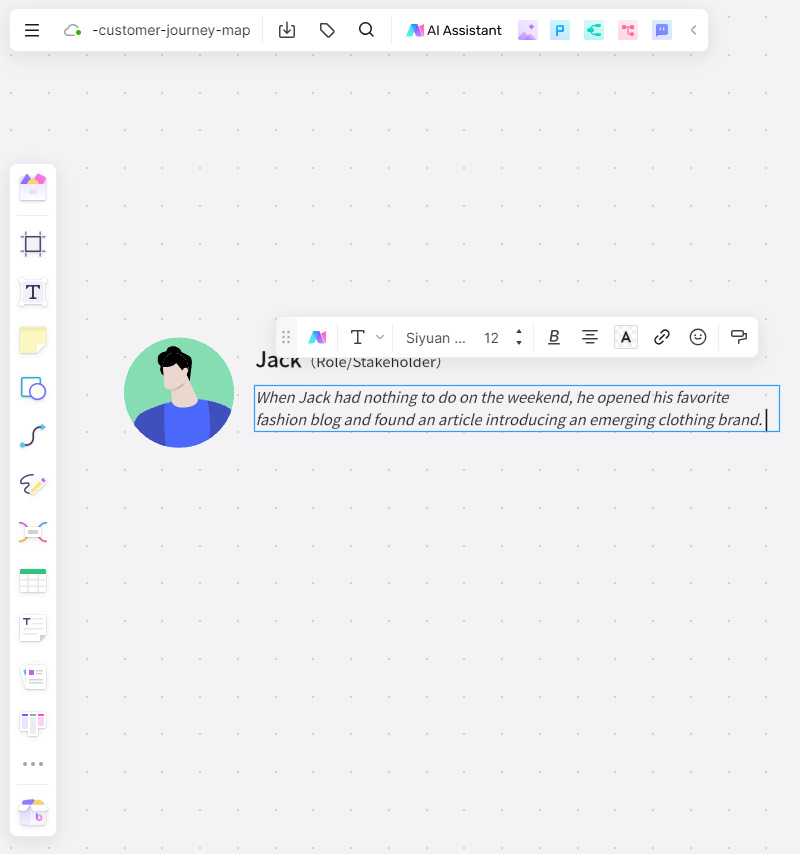
4. Outline Customer Stages
Next, outline the different stages a customer goes through in their journey with your brand. This may include stages like awareness, consideration, purchase, retention, and advocacy.
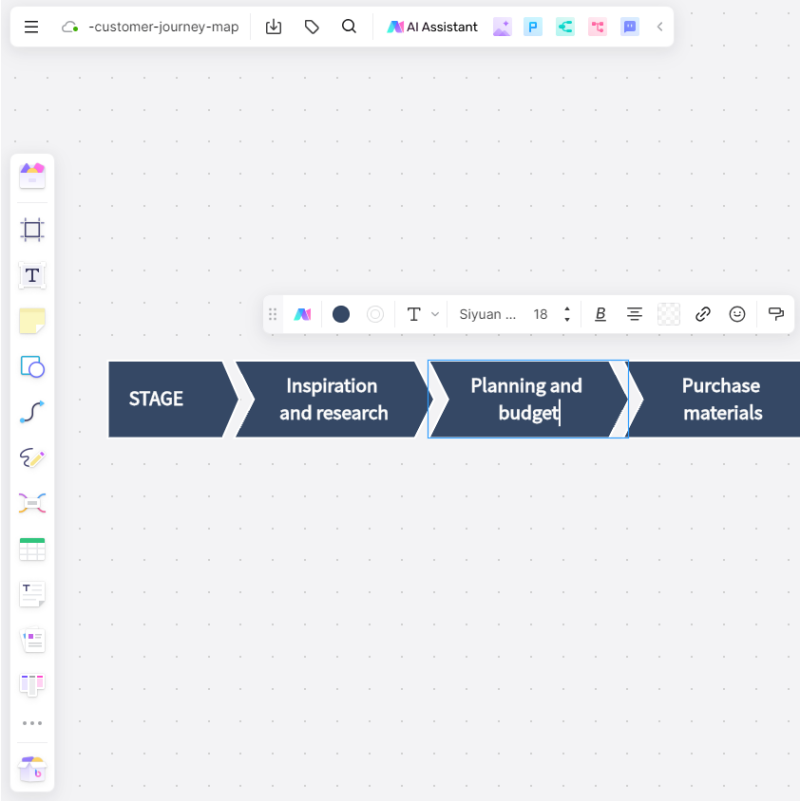
5. Map Customer Actions, Thoughts, and Feelings
In each stage of the journey, map out what the customer is doing, thinking, and feeling. This information should be based on customer data and research to ensure accuracy. You can use different shapes and colors for these elements to make them easily distinguishable.
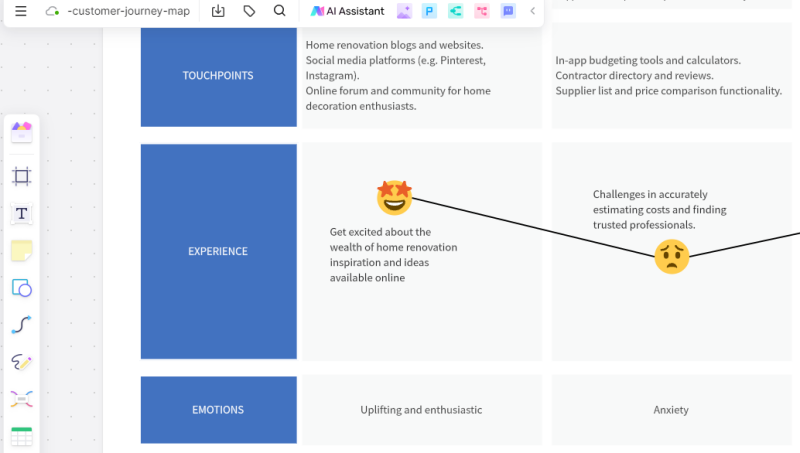
6. Identify Touchpoints
Identify and plot the various touchpoints or channels where the customer interacts with your brand in each stage of their journey. This could be your website, social media platforms, email communication, etc.

7. Collaborate and Gather Feedback
Invite team members to collaborate on your Boardmix board in real time. Gather their feedback and make edits accordingly. This can ensure multiple perspectives are considered and incorporated.
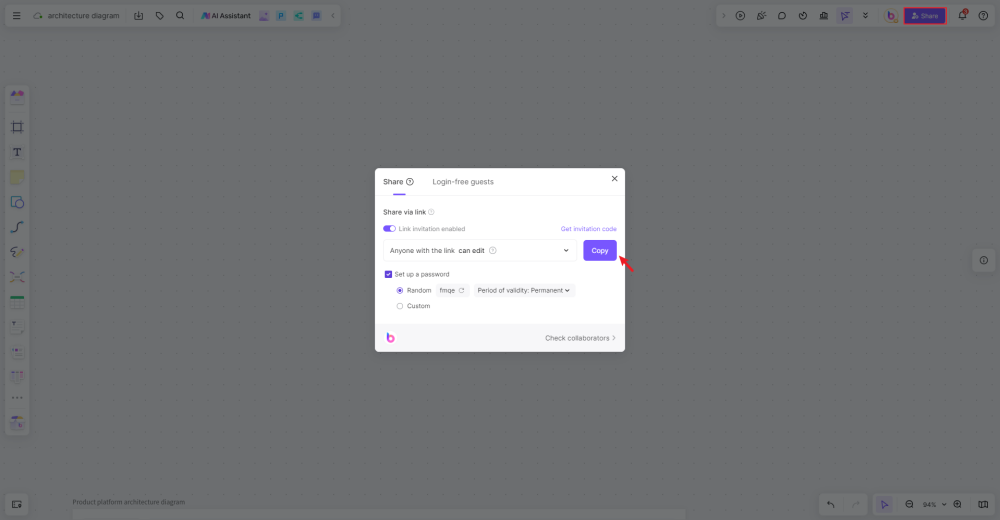
8. Save and Share Your Map
After finalizing your customer journey map, save it to Boardmix's secure cloud storage for future reference. You can also share your map with stakeholders through a shared link.
By using Boardmix to create a customer journey map, you can visualize and improve upon the holistic customer experience, enhancing satisfaction and driving growth for your brand.
Benefits of using Customer Journey Map Template
Better Understanding of Customer Needs
While companies analyze customer behavior through the different sales funnel phases, there will be a clearer vision of what customers need. Knowing your audience helps you decide the initiatives your company can do along the sales process. Some want to speak directly to a representative, while others prefer indirect approaches like blog posts or newsletters.
Clearer Picture of Customer Experience
It is not only about clearer visuals of the customer experience but also a uniform picture. There will be instances when one department has different customer information. However, a customer journey map can provide centralized information about the customers' journey with your business. Additionally, the map helps your team understand whether the target market is having a pleasant experience interacting with your company.
Improved Customer Satisfaction
Besides the aspects customers like about your business, the customer journey map also lets you discover the processes that need improvements to make the experience more enjoyable. Recognizing these insights allows your team to positively modify the customer's journey and make brand engagement easier. Along the way, you can map out the progress of every customer's journey resulting in a more enhanced content marketing strategy.
Tips for Using Customer Journey Map Template
Iterate and Update Regularly
Emotions and behaviors can change over time, so updating your map regularly is essential. In some cases, you might expand your customer persona and add more market segments. Ultimately, customer patterns can also change, so updating the map allows your brand to cater to customer needs when necessary. After all, you only want these customers to use your brand for a long time.
Collaborate with Other Departments
The success of your customer journey map template also lies in collaboration. Besides the marketing team, who are usually part of the creation process, it also pays to get inputs and insights from the sales department, the design team to effectively create a visually appealing template, and the IT team who can cover some data collection from your target customers. Of course, if the information from other departments is too much, you can always filter those that will help your cause as you create the map.
Keep it Simple
As has been previously said, you need not have overwhelming maps to develop better initiatives to improve customer experience. The simpler the map is, the better it will be visually. It is easier to understand every stage of your customer journey map template if you keep the words straightforward. Of course, there might be sections on the map in which you must provide explanations but ensure to keep them at a minimum.
Use Visuals
The exciting thing about this template is that you can provide photos, stickers, and objects to represent your points. Remember to give legends to make sure everything is clear. Overall, having more visuals on the map will seem easy to the eyes. In short, you can be playful with your map but remember not to forget your goal, which is to understand your target customers better and develop practices to serve them better with your products and services.
Conclusion
There are several ways to determine a customer's behavior. However, using a customer journey map template allows businesses to have a personalized record of every target customer they have. Since the map includes recording customer emotions, actions, and personas, it can generate a clear and concise marketing approach so companies can service these customers better and keep them for long. Meanwhile, they can also make better marketing initiatives if they discover discrepancies after creating the map.
While the main goal is to generate a better customer experience, every company has a different definition of what is better and various approaches to achieving it. This is why one needs to specify the goals during the first stage of creating the customer journey map template.


